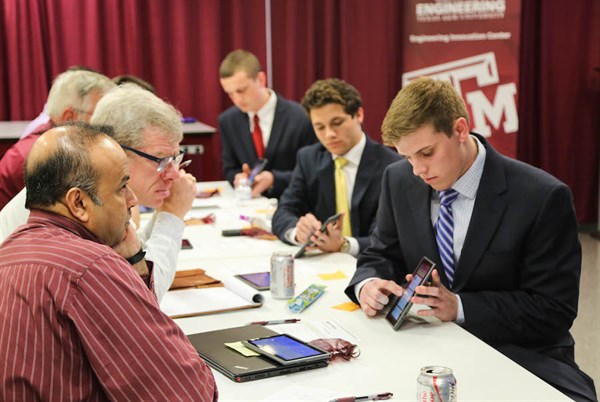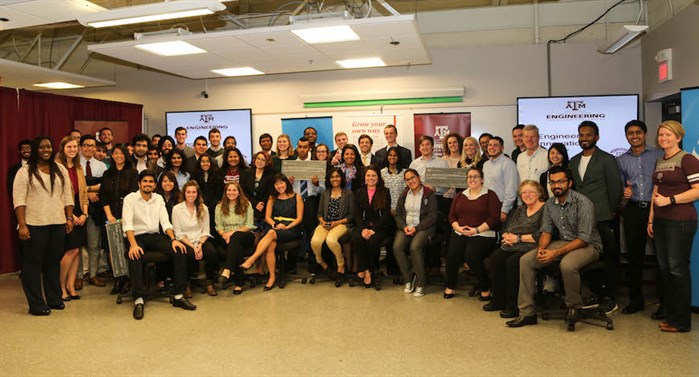What happens when you mix engineers with education students and design needs from sponsors? You get solutions to healthy eating habits, educational and safe social media, and special needs education tracking. These three ideas took the top spots at the latest Aggies Invent, which was focused on educational needs.
In 48 hours, the innovators created mobile apps, virtual reality, physical devices and more to combat problem statements related to improving educational techniques for children.
Aggies Invent promotes an innovation and entrepreneurial mindset among students at Texas A&M University. It gathers invited students, provides them with the needs statements submitted by sponsors, allows them to self-select teams, and gives them access to industry mentors and support from the Engineering Innovation Center (EIC) to create solutions and prototypes in 48 hours.
The focus of the most recent Aggies Invent was education. The main event sponsor was AT&T. PricewaterhouseCoopers (PwC), Huckabee (an architecture firm specializing in educational space design) and the Texas A&M College of Education were also sponsors of the event.
More than 100 students applied for “Aggies Invent: Education,” and 59 were selected to participate. The students ranged from freshmen to doctoral candidates. Most participants were engineering students, but the group included students from across the university. Notably, half of the participants were female. Engaging different disciplines fosters development of solutions that are truly innovative and creative.
The winning team, Veggie Roll, was comprised of Carlos Rios, Crystal Nguyen, Caitlin Vu and Muddassir Tai. Veggie Roll is a portable gardening tool to teach children proper planting distances for crops. The goal of Veggie Roll is to teach children in developing countries how to grow food to sustain themselves. Additionally, Veggie Roll teaches children about geometric shapes, accuracy with planting and healthy living habits.
Second place went to the team of Austin Verrett, Mohammad Sagor, Julian Franklin, Murphy Young, Nivedhan Manavalan and Thomas Rockwood for its product, STEM Space, a social media app to engage kids in STEM (science, technology, engineering and math) at an earlier age. STEM Space offers students a new format to become interested in STEM through engaging online activities; additionally, teachers can track student progress and promote a safe learning space online.
GRIT (Guiding Results and Informing Teachers) came in third place with an app for teachers to create and monitor the educational path of special needs students. Team members included Will Davis, Mehwish Khan, Miguel Rodriguez and Katie Black. GRIT streamlines data collection for special needs educators, builds a collaborative platform for educators and parents and tracks student progress.
This Aggies Invent was judged by Dr. Prasad Enjeti from the college of engineering; Darrell Lane, director of PricewaterhouseCoopers; Dr. Lynn Burlbaw, professor and co-department head Department of Teaching, Learning and Culture (TLAC) in the College of Education and two software engineers from AT&T, Stormy Adams and Robert Reilly.
The top three teams received $1,000, $750 and $500, respectively.
The innovation does not stop at the awards. All teams are invited to continue working on their project and will have access to the EIC and mentors to help them improve their idea and create more advanced prototypes. Rodney Boehm, director of Aggies Invent and associate professor of practice, continues to provide guidance to each team throughout this process.
 “Each team developed very unique and innovative solutions to their design challenges, Boehm said. “We are encouraging them to continue by helping them tap into the entrepreneurial resources throughout the university.”
“Each team developed very unique and innovative solutions to their design challenges, Boehm said. “We are encouraging them to continue by helping them tap into the entrepreneurial resources throughout the university.”
For more information about Aggies Invent, please see https://aggiesinvent.tamu.edu/